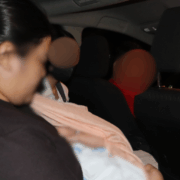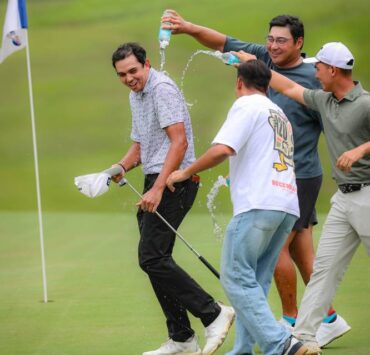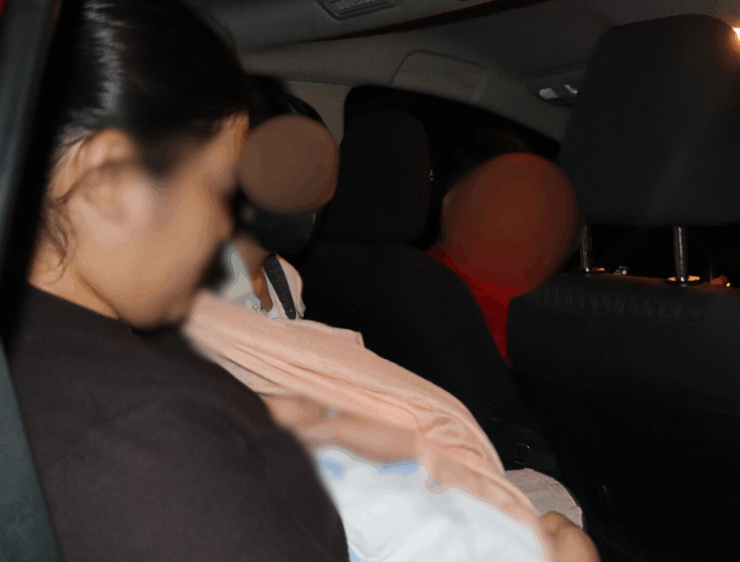New life for eagles harmed by humans
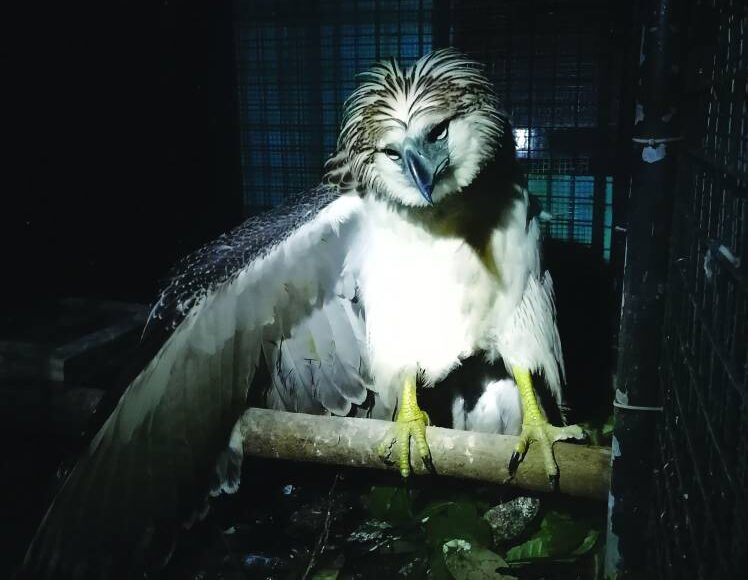
DAVAO CITY—Inside a recovery cage, the juvenile Philippine eagle (Pithecophaga jefferyi) “Kalatungan 2” perches on a pole as if everything was all right, except that it only has a right wing to do the balancing.
Some three weeks ago, Kalatungan 2, estimated to be about seven months old, underwent surgery to amputate its left wing that was badly injured from a suspected “jolen” or marble gun.
“The eagle was using the stump initially to balance, so it was more for protection because it bumps on the cage from time to time, to keep the sutures intact and also to keep the surgical wounds clean. Now, the eagle’s more used to having only one functional wing so the stump is less likely to get injured,” explained Dr. Bayani Vandenbroeck, veterinary consultant of the Philippine Eagle Foundation (PEF), who did the surgery on the young raptor on Aug. 31.
“If the incisions are in places where they can get potentially infected or prone to friction or pressure then we bandage initially until sufficiently healed,” he said.
“Incision wounds were cleaned and the stitches were observed to be intact, with good healing of the wounds. No rebandaging was necessary,” the eagle’s medical report states.

On Sept. 14, Kalatungan 2 was transferred to a bigger quarantine cage and will be ready for transfer to a much bigger space in the Philippine Eagle Center in Malagos District here.
“We are very relieved and comforted that Kalatungan 2 is out of the woods and on the road to full recovery,” said Dr. Jayson Ibañez, PEF director for operations.
Realizations
Vandenbroeck, along with Dr. Sheen Erica Gadong, performed the physical assessment of Kalatungan 2 last week. Tests done on blood samples taken from Kalatungan 2 showed marked improvement of the young eagle’s condition compared to the last ones conducted before the surgery.
The prognosis of Kalatungan 2 is good and it is expected to continue to recover without further problems, Vandenbroeck said.
But Ibañez had bittersweet realizations.
“It is clear that we have the right heart, skills and expertise to save injured eagles from the verge of death. However, it is better if shooting and trapping is stopped altogether so that no more eagles would suffer the same ordeal and pain that Kalatungan 2, ‘Mangayon’ and countless persecuted eagles have experienced,” he told the Inquirer.
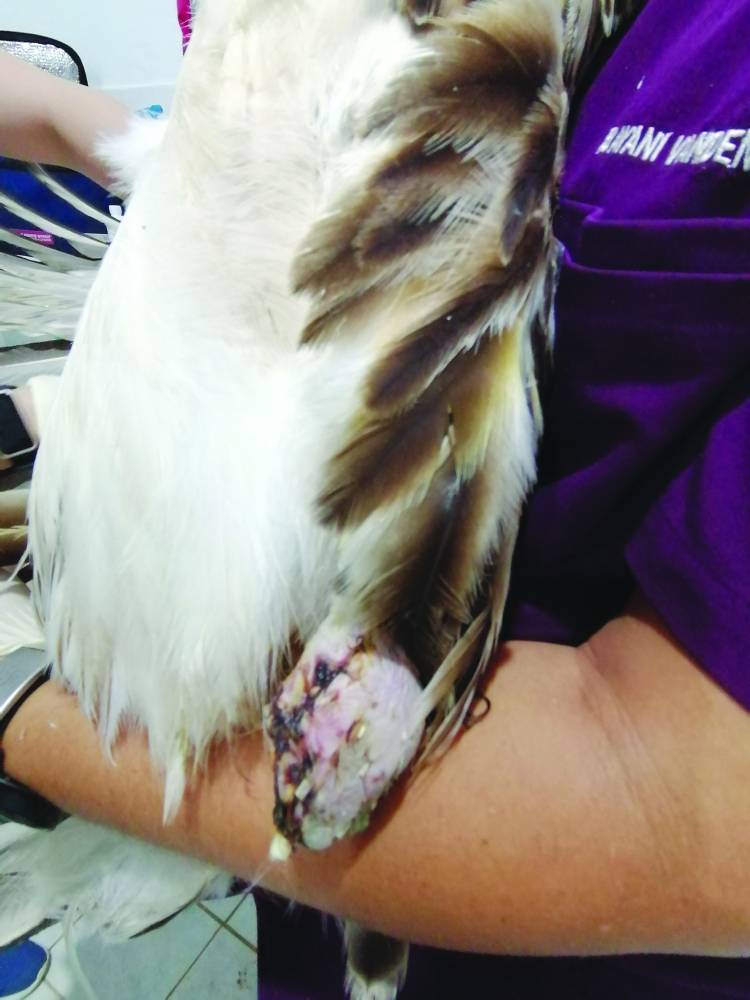
Mangayon was the raptor rescued in Davao de Oro province in July but eventually died due to infections from a wound.
Kalatungan 2 was rescued in Valencia City, Bukidnon, on Aug. 31 with a critically injured left wing which was eventually amputated that same day.
When found by volunteer forest guards of the Kalatungan Range Natural Park, it was perched on a tree and was “calling out loudly due to apparent distress and starvation,” according to a report of the bird’s rescue.
‘Alarming trend’
Kalatungan 2 was the second to be rescued on the edges of the Kalatungan range, and the fifth and youngest among the eagles rescued by the PEF this year.
Ibañez said the rising number of eagle rescues was “an alarming trend.” Of the five rescued this year, four belong to the “juvenile-immature” age group, hence, were mostly naive and less experienced and vulnerable to human harm.
PEF executive director Dennis Salvador said the conservation community was “deeply distressed by the continued persecution of our national bird in the wild.”
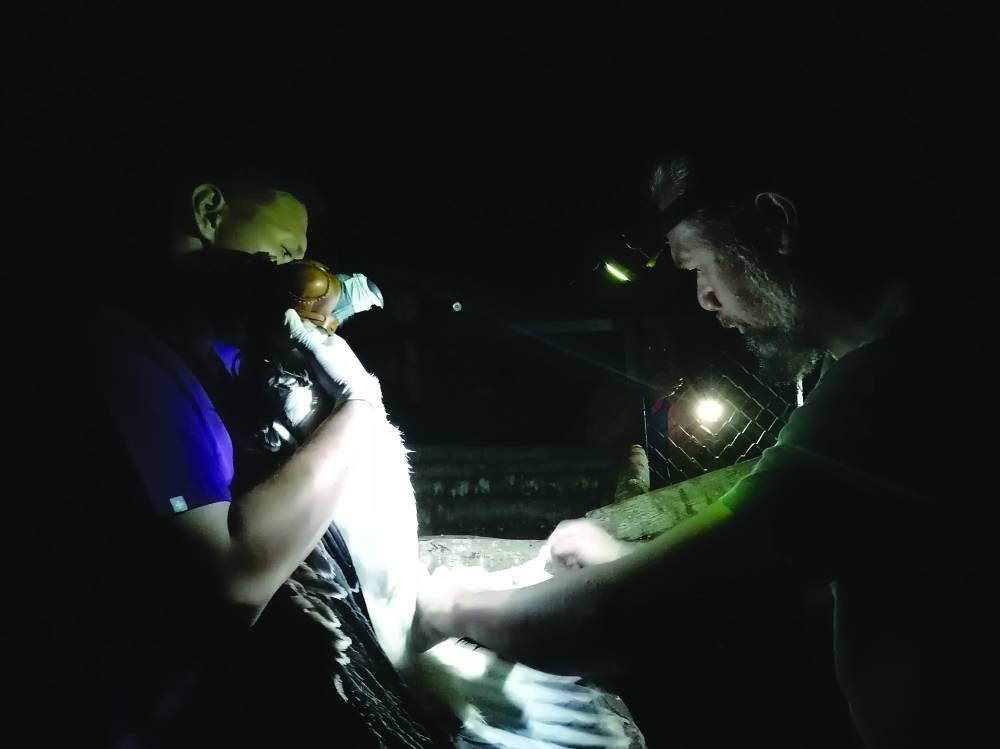
The country’s national bird is critically endangered, largely due to loss of habitat and human persecution like hunting, with experts estimating that only 392 pairs of the raptors remain in the wild.
The Philippine eagle, described as one of the rarest eagles in the world, can only be found in the forests of Luzon, Samar, Leyte and Mindanao.
“As the species on top of the food chain, the Philippine eagle has a crucial role to play in keeping the gentle balance of the ecosystem in check. It helps naturally regulate species population and provide an umbrella of protection to all other life forms in its territory. An abundant Philippine eagle population means a healthy forest,” a PEF briefer read.
“We hope that authorities would swiftly work on preventing eagle shooting and trapping from happening altogether,” Ibañez said.
Conflict with humans
Based on documented cases, incidents of human persecution against eagles mostly happen in Mindanao. Many of the raptors that survived but are no longer fit for release back to the wild are being cared for at the Philippine Eagle Center.
“We need more public education and wildlife law enforcement, but it might be prudent also to capture and move (or translocate) these innocent birds to vacant, safer and more protected forest habitats to spare them from needless torment,” Ibañez said.
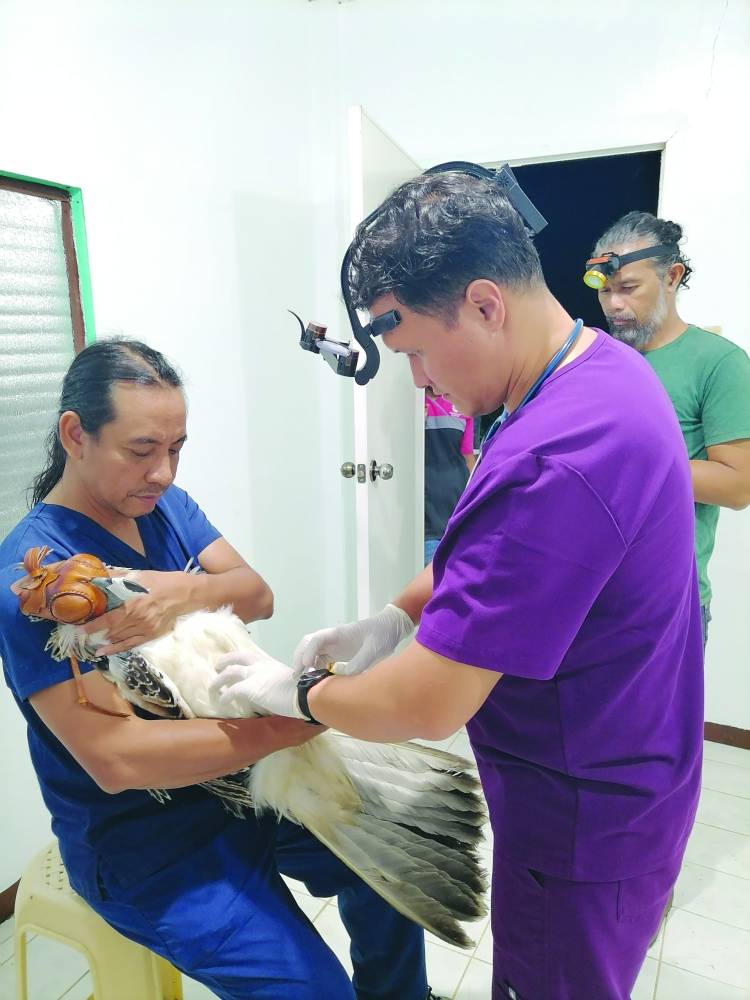
Last June, the PEF and the Department of Environment and Natural Resources began translocating eagles from Mindanao to Leyte with the release of “Carlito” and “Uswag” in the Anonang-Lobi Mountain Range in Burauen town.
Salvador had noted then that apart from its preserved lush forests, Leyte offers a good habitat for the endangered birds as there had been no previous incidents of eagle hunting there.
According to a PEF briefer, at least one Philippine eagle is killed every year because of gun attacks.
“As more of our forest is lost, Philippine eagles go farther and farther from their usual hunting grounds in search of prey to hunt. This usually brings them towards human settlements and their livestock, which often results in conflict, with the Philippine eagle on the losing end,” the PEF said.
Unfit for the wild
Given its condition now, Kalatungan 2 is no longer fit to be released back to the wild, said Ibañez, hence they are grooming the still immature eagle to be a breeding raptor, just like “Ariella” and “Bangsa Bae.”
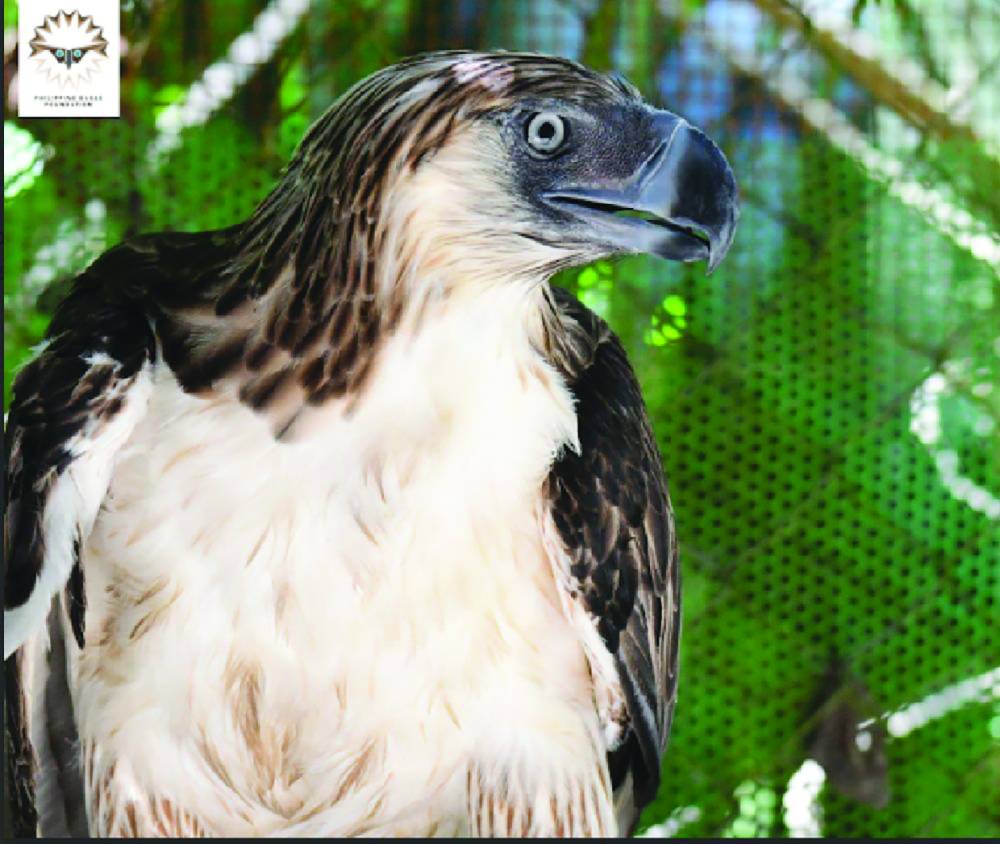
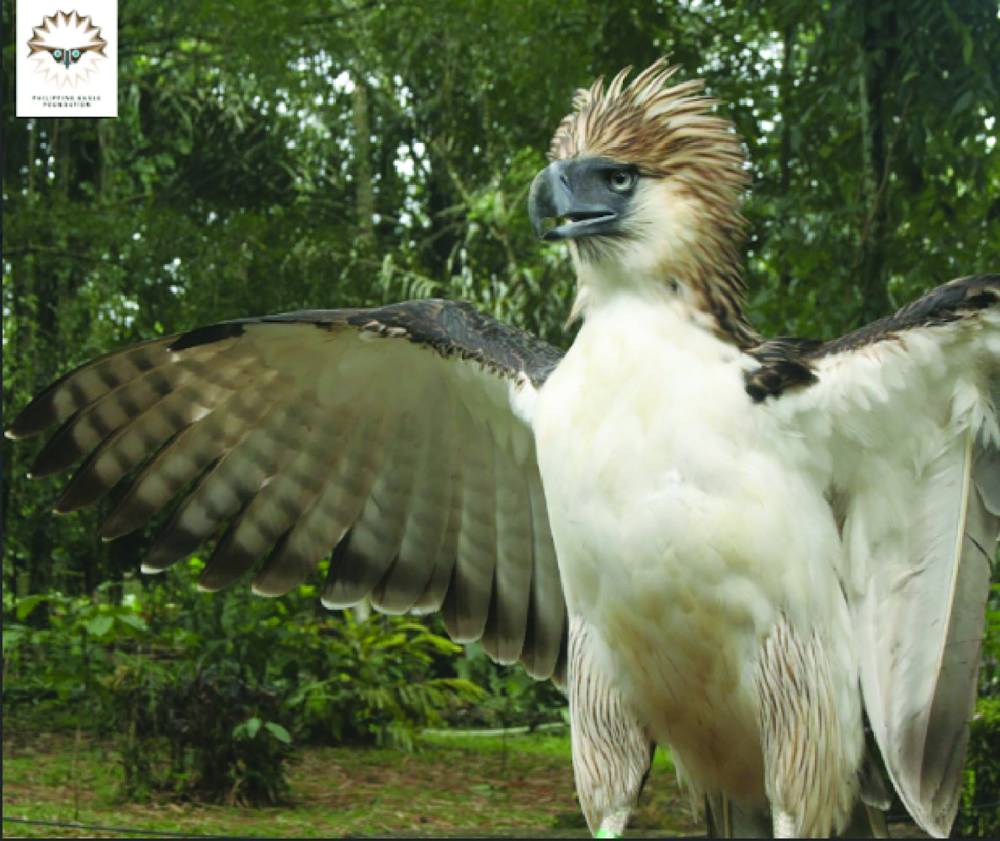
An eagle usually takes five to seven years to become sexually mature. It lays a single egg every two years as it mates only after their offspring is able to make it on their own.
Bangsa Bae, named in honor of Bangsamoro women, was found in February 2022 at Barangay Piyangologan in Marogong town, Lanao del Sur. Her right wing was severely injured due to a jolen wound and was eventually amputated.
Today, Bangsa Bae is staying at the National Bird Breeding Sanctuary in Barangay Eden at Toril District here, a facility off-limits to the public that is designed as a sort of Noah’s Ark for the endangered birds. She is paired with “Balikatan.”
Ariella, which had two digits of her left foot amputated before, is also at the Eden facility and paired with “Matatag.”







